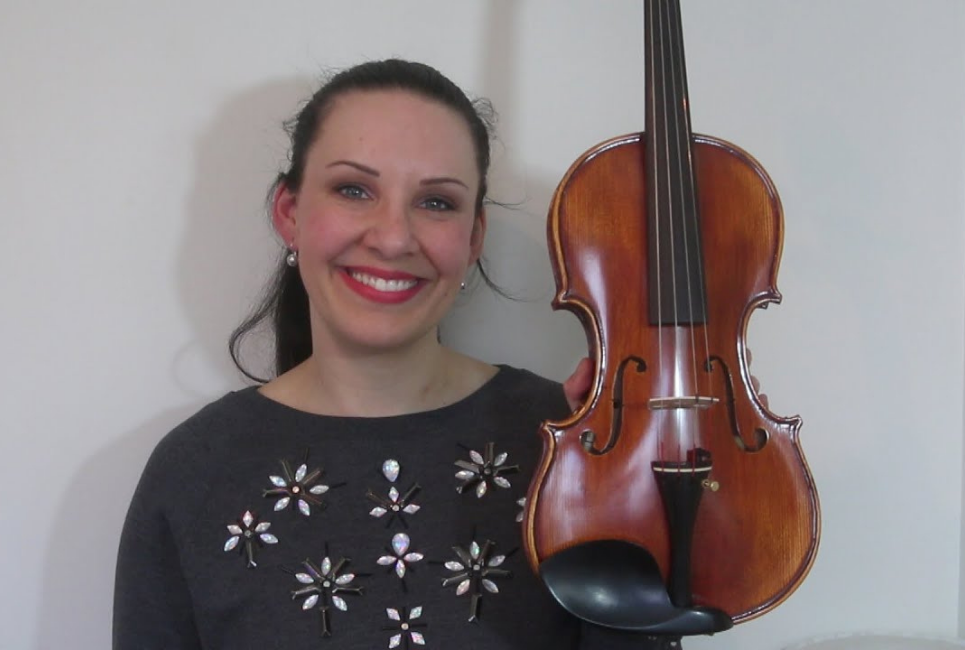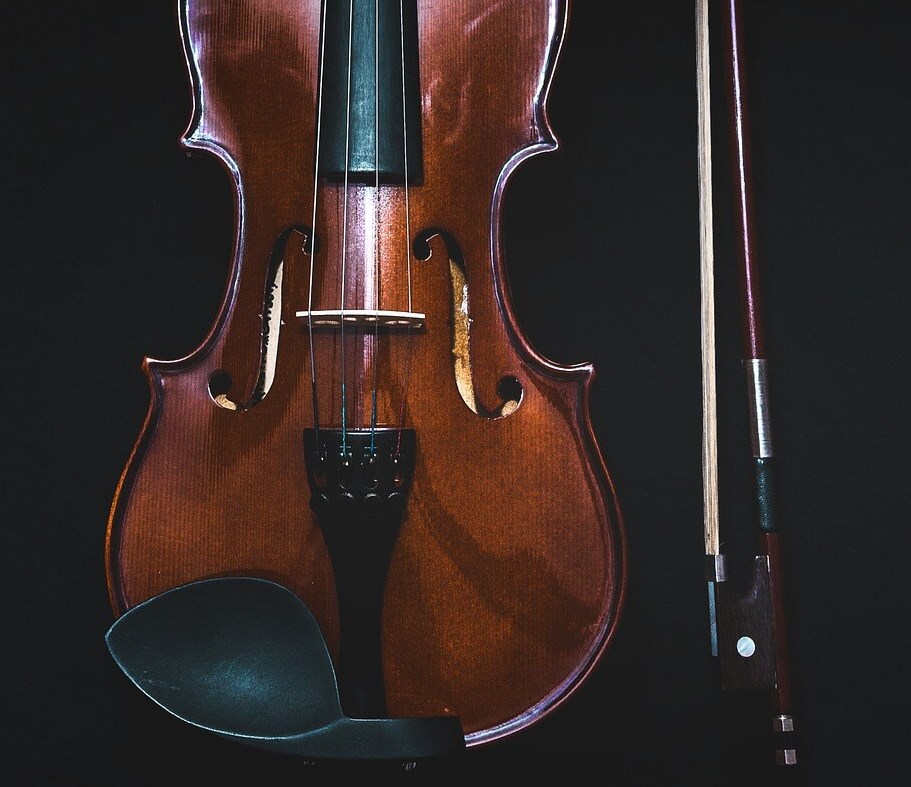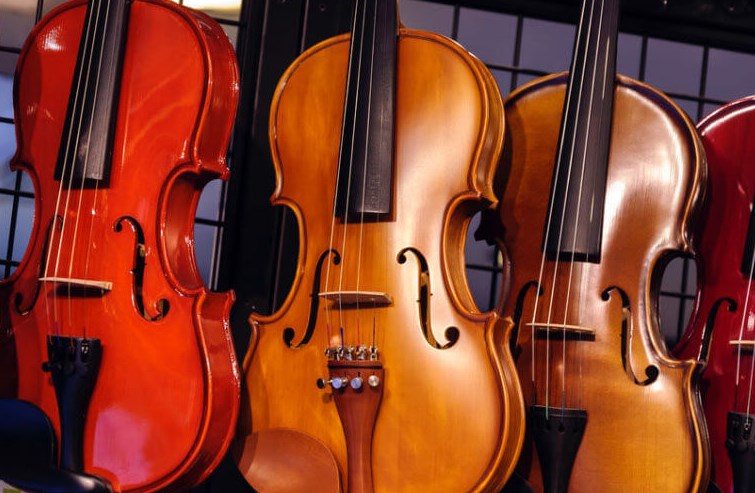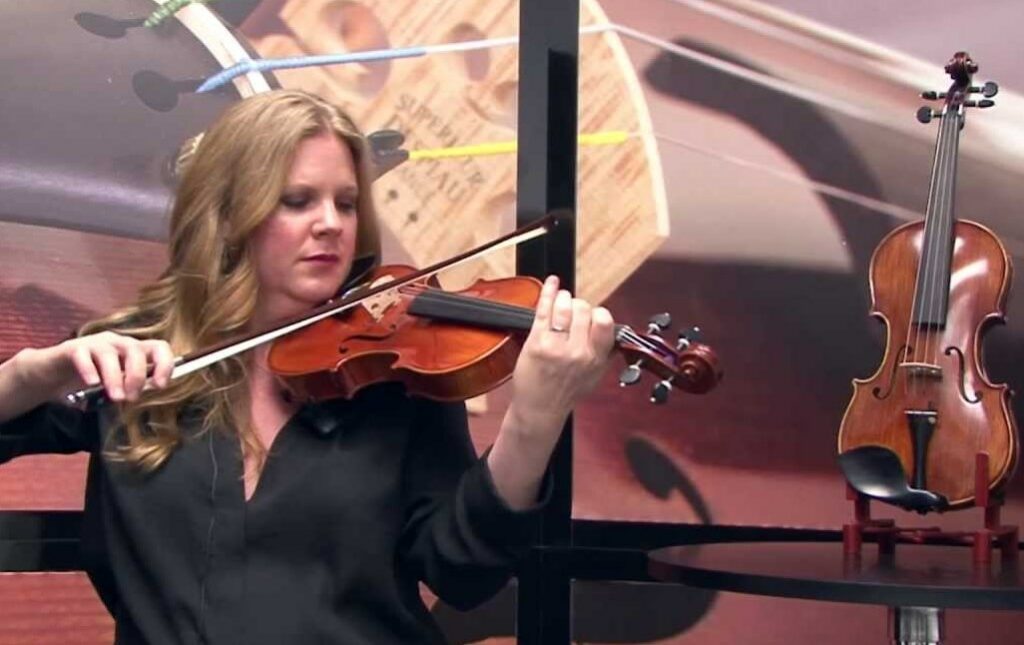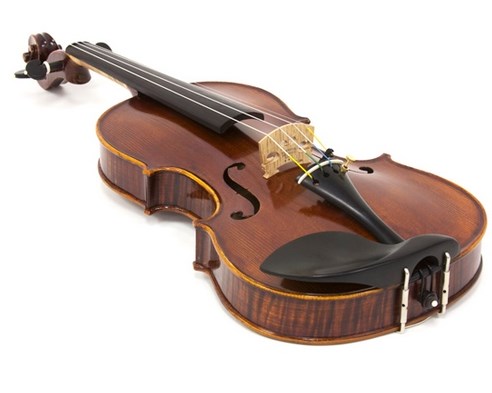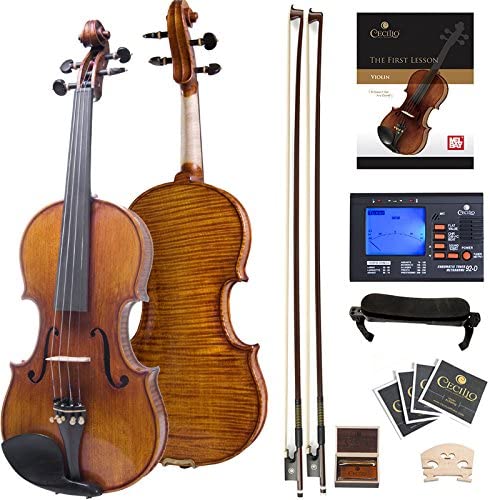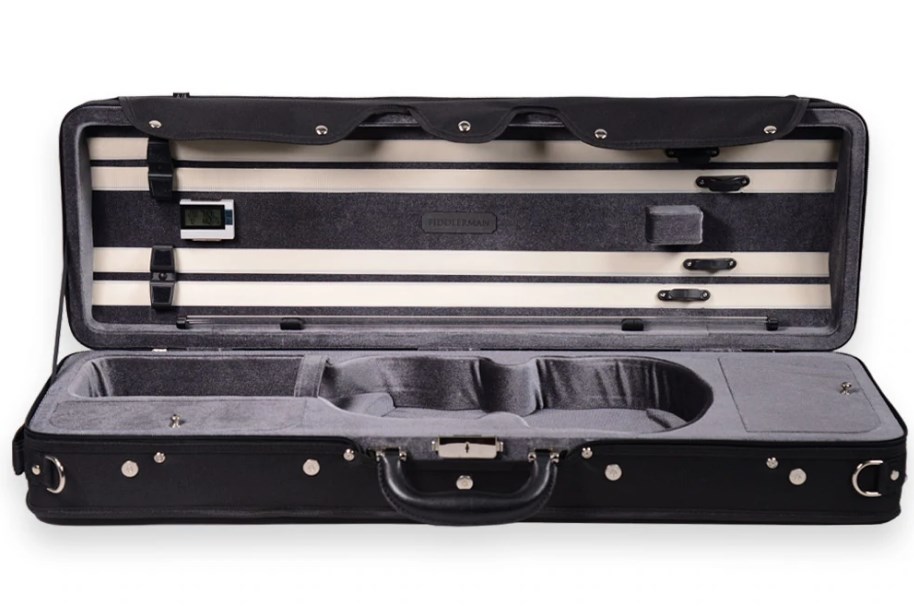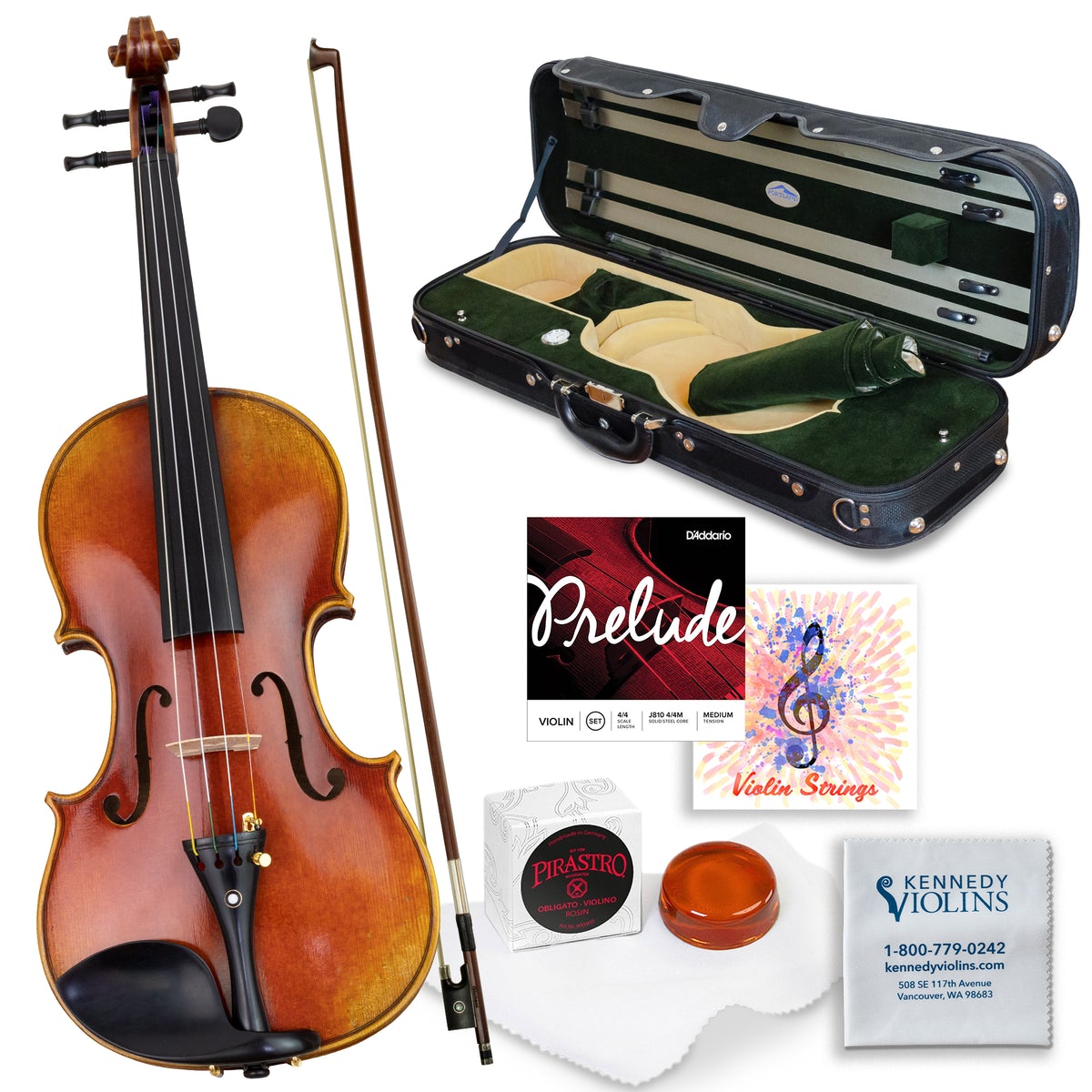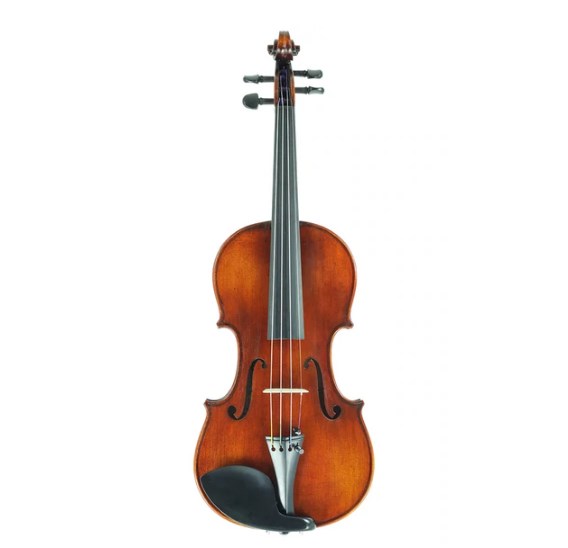- Mendini MV300: An Honest Breakdown and Review - April 6, 2022
- Cecilio Viola Review and Guide: 3 Violas, Which is the Best? - January 21, 2022
- Cecilio Electric Violin Review and Guide: A Silent Practice Violin! - January 20, 2022
When I hear the name Cecilio or Mendini, I automatically think of cheap student violins found on Amazon. When I learned that they attempted to create a violin that could compete on the professional market, I was floored. At one point, Cecilio really did try to break into every level of playing with inexpensive but higher-quality instruments, including a wood clarinet. Over time they have slimmed their line to focus on the instruments they sell the most. Now you will find up to the CVN 600 on Amazon.
Their ‘professional’ model, the CVN 800, is a little bit harder to track down. I’m assuming they don’t sell many of these violins on Amazon due to the high price tag and their reputation. Contacting them is the easiest way to acquire one. Still, you can find it popping up in various music stores or occasionally on eBay, Reverb, or other popular used instrument listing sites.
Pros, Cons, and Bottomline
Did Cecilio succeed in making a professional violin? No, you can’t compare this violin to a violin you would find from a local music store or from other brands and companies. In the wise words of Allison Sparrow, “It would be like comparing a Ferrari to a Ford Fiesta.” You can find better quality violins for a similar price point both online and at a local music shop or find a comparable Cecilio violin for significantly less. Unless you love how this violin sounds, I wouldn’t settle on it.
Pros
- Hand-carved one-piece maple back
- Hand-carved solid spruce to
- Aged and flamed tonewoods
- Ebony fittings
- Quality bow, bridge, and strings.
- Quality case
- Concierge set-up (set up by an individual, not an assembly line)
Cons
- Expensive!
- Not a professional violin
- Heavy for the price point
Intermediate vs Professional Violin
The largest difference between a violin crafted for professionals and a violin made for students is the quality of the wood and its age. While most violins are made from spruce and maple tonewoods, not all tonewoods are the same. Professional violins are made from select tonewoods, which usually means they are made from trees that grew in specific parts of the world. Tonewoods found at high altitudes are considered the best; this is where trees grow slowly and are able to mature. Using these tonewoods will allow for the best sound. I’m personally eyeing a violin made out of Russian tonewoods. Most student instruments are made from Chinese sourced wood, this isn’t horrible, but it won’t offer the same tone.
Aging tonewoods in a controlled environment give violins a head start in the tone department. However, they still need to settle into their full potential once crafted. When focusing on a professional violin, the wood may be aged 25 to 50 years or more. Intermediate violins you will typically find five to ten years.
Stradivari is considered one of the best makers of violins, and his violins are sold for millions of dollars. Many have tried to replicate his violins through precise measurements and exact copies of his own plans but still fall short. The wood that Stradivari used to create his violins is from a valley known as the Forest of Violins in Paneveggio-Pale di San Martino Natural Park in Italy. These trees experienced harsh winters that produced a different ring formation that aides in the violin’s tone. Creating a violin with the same quality as Stradivari violins requires that the maker source their wood from this valley and then let the violin be played for another 200 years.
The key is allowing the violin to age and grow into itself. Regardless of where the wood is sourced, Violins made from quality woods will continue to age and change as they are played over the years. You can’t compare a violin made 20 years ago to a violin made today. This is why antique violins are so heavily sought after; they’ve had time to grow into their full potential.
What About Everything Else
Professional and intermediate musicians will have their preferences regarding fittings, strings, bows, cases, and more. Antique violins have likely gone through many different set-ups as new materials styles of types of fittings and bridges have come out. When testing violins, remember that if it isn’t glued on, it can be changed (glued pieces can be changed technically. Even the soundpost can be adjusted. Professional violins cost thousands of dollars, so make sure you get what you want from the violin.
If you prefer rosewood fittings, then put them on; if you want your bridge at a different angle, let the luthier know that. They will make sure you walk away with the best instrument for you. If you are buying online, make sure you can personally work with their luthiers on adjustments and receive video tests of the instrument. Don’t buy something of this importance in your music career blindly.
The violin’s fingerboard should be ebony, which is standard. Fingerboards are replaceable and repairable. An antique violin may have had a few different fingerboards in its lifetime.
Bows and strings will likely be chosen based on that instrument and its personality. Many string brands serve both professionals and intermediate players, including Piastro, Evah, Thamastik, and Obligato. Dominants are a student favorite, but you will find different strings offer different tone benefits as you progress.
Bows are similar, but as a general rule, bows should be about 1/10th the cost of the instrument. Of course, this rule can be broken, and a better bow can help aid in playing. New instruments may be cheaper now, but it will be worth a considerable amount more in ten years, so purchasing a slightly better bow makes sense. Advancing players will find a carbon fiber bow the most reliable.
If you are trading in and wish to keep your case, that can likely be arranged. Otherwise, purchase a nice case that you can comfortably travel with and has enough storage room. I always like to use new instrument purchases as a chance to upgrade my case. As I’ve progressed as a violinist, I’ve found I need more room for my various necessities and extras. My favorite cases come with a specific place for your shoulder rest, a humidifier, hydrometer, and thermostat, which are typically things you will find in advancing student outfit cases as well.
The CVN-800 Where Does It Fall
The CVN 800 attempts to push itself into the professional category by featuring a hand-carved solid one-piece maple back, sides, and a hand-carved solid spruce top. The wood has been aged a minimum of ten years. The varnish is hand oil rubbed similar to their other higher-end violins and features a medium-dark finish. The fittings and fingerboard are ebonies, giving it that standard violin look.
The tailpiece features a single gold plated fine tuner, and the pegs have white detailing, which is a nice touch. Overall it’s a gorgeous instrument, I love the one-piece back and the flaming on the sides.
The violin is made from quality materials, but it’s still not in the professional playing field. Cecilio doesn’t reveal much about its manufacturing process or where they source their materials. The instrument is made in China, so I can assume that is where the wood is sourced for their violins. This is pretty common on student and intermediate instruments.
European or American wood harvest during the winter months from high altitudes is the most sought after, but wood harvested from various regions in China is much easier to acquire. Aging the wood gives it a nice head start in the tone department and will only aid in the value of this violin. Over time as the violin settles into itself, you will start to see its personality.
This violin comes with an outfit that includes a Revelle Raven carbon fiber bow and rosin. The included cases are a nice upgrade and include a hygrometer, lots of storage, and two bow holders. The violin has dominant strings, a standard, intermediate string set, and a Despiau Bridge from France. I use this bridge on my intermediate violin from Eastman as well.
This is a great quality violin, but it’s far from a professional-level violin. It could be a great choice for intermediate or growing players with the budget for this violin. Still, this violin is the Ford Fiesta of the violin world, and you can find your intermediate Ferarri violin for the same price point with a little digging.
How Does it Sound
I found it to leave a lot to be desired out of the case. The preferred tone is a matter of perspective. I like balanced violins with a darker and mellow overall tone. I love it when my G strings are a bit growly, and my E string is clear but not overly bright. My first impression of the violin was that it was a bit muted and a bit muddy. The upper register sang, but it had a tinny undertone. Most importantly, I want my violin to feel open and easy to produce a good tone from, which I don’t find in this violin.
You can hear the sound for yourself, here!
Giving this violin a good six months to warm up and settle into itself could reveal a better, more sophisticated tone. However, I’d rather not play an instrument that I don’t like in hopes that I do like the sound eventually, especially if I can find something I like for the same price and similar quality.
The Violins I would Pick
Based on their quality to price ratio, reviews, and brand reputation, these violins were chosen.
CVN 700
The CVN 700 gives this violin a run for its money, in my opinion. The only difference between this violin and the CVN 800 is the age of the wood, how many hands created it, and the price. This violin is about half or less than the CVN 800. The CVN 700 features hand-carved solid spruce and maple tonewoods that have been aged for seven years and a hand oil rubbed finish.
Along with ebony fittings and fingerboard. The outfit comes with a case, two bows, a tuner, shoulder rest, rosin, and an extra bridge. When comparing the two violins side by side, I preferred the CVN 700. However, this violin will need to be set up by a luthier, so keep that in mind. Out of the case, the tone was brighter, open, and enjoyable. I particularly enjoyed the E string and how it sings.
Friddleman Master Violin Outfit
The Fiddlerman Master Violin Outfit meets and exceeds the quality of the CVN 800 for significantly less money. This violin features hand-carved spruce and maple tonewoods and that have been aged for 10 years. The bridge is either a Despiau 3-tree or Holstein 3-star, similar to the CVN 800. The violin comes fully set up with string chosen for the particular instrument.
You can also ask it to be set up with your favorite strings. The outfit includes a carbon fiber bow, shoulder rest, rosin, practice mute, and toner, along with a spacious case that includes a digital thermometer and thermostat. In terms of sound, I love the darker G string and the slightly mellow E string. However, Fiddlershop will go through their violins to find one that fits the tone and style you are looking for. They will also recommend different violins they have in stock, so you walk away with the one you want. It’s basically an store service, online.
Nikola Zubak Violin
The Nikola Zubak Violin from Kennedy Violins, another known violin seller on Amazon, is an excellent choice for the advancing violinist. The violin is made of select spruce and maple tonewoods, with a honey brown oil varnish and ebony fittings. The bridge is a custom French Aubert that is lovely and perfect for learning advanced techniques. The violin comes with D’Addario Prelude strings, which I’d recommend upgrading. An extra string set, polishing cloth, cleaning cloth, rosin, and a brazilwood bow. They recommend an upgraded carbon fiber bow like the CodaBow Diamon SX. I found this violin to be very bright but clear; it felt even. The lower register had some oompf to it while the upper register was clear and sang. They compliment each other well.
Eastman VL305
I couldn’t leave this review without mentioning the Eastman VL305. This is my current violin, which falls comfortably into the intermediate category. We’ve had a bit of a rough relationship at first. Still, as I progressed as a musician, I began to truly enjoy the nuances of this violin. Featuring European spruce and maple tonewoods, with hand-inlaid purfling and a shaded spirit varnish. It has a darker amber color with hints of dark red, and the ebony fittings look very nice. Although I’ve upgraded to Rosewood to bring out the reddish tones. The violin comes strung with Dominant strings, Cadenza * Bow, and a spacious case with a red interior.
When I first received this violin, I enjoyed its tone, especially on the lower register. However, it has taken about 3 years for the true personality of this violin to come out. The G, D, and A strings are all very responsive, open, and great tone. The G string is my favorite and the reason I wanted the violin; it’s open but a little growly. I like it for Jazz music. I’m not the biggest fan of the E string, but I don’t hate it. It’s just a little bit too bright for my liking. However, I’ve been trying different strings to see if I sway the tone a little bit. Overall I really love this violin; it’s great quality and one of the most sought-after intermediates to advanced level violins.
FAQ
Answer: This varies; student instruments can cost as little as $180. Advancing players can expect to pay around $1200 or more for their violin. I paid about $1500 for my violin, but you can thousands. Professional violins range anywhere from $2500 to millions depending on the age, wood, and repair status.
Answer: This is subjective; I’m partial to the CVN 600 for its features, tone, and price point. The CVN 500 is also a great contender at a cheaper price point. Neither of these really compare to the maturity found in the CVN 700 and 800.
Answer: I like both, honestly. The significant difference between Mendini and Cecilio is the strings they are strung with. Cecilio comes with D’Addario prelude strings stock, and Mendini comes with their in-house brand. The price difference reflects this change as well. The instruments aren’t that different outside the finish color until you reach the 600 range. The CVN 600 features aged wood that its Mendini counterpart, the MV650 does not have.
Final Thoughts
Cecilio put a lot of thought into this violin, and it shows. However, it still can’t stand up against other violins with the same features and price points, and it’s certainly not a professional instrument. This wouldn’t be the first violin that comes to mind if someone asked me about intermediate violins. Instead, I would direct them to Fiddlershop or Eastman for the brand reputation, quality, and overall availability.
For more interesting readings, check out:

